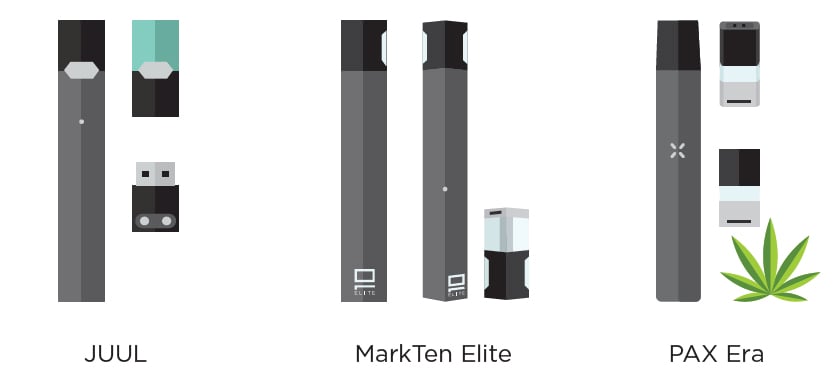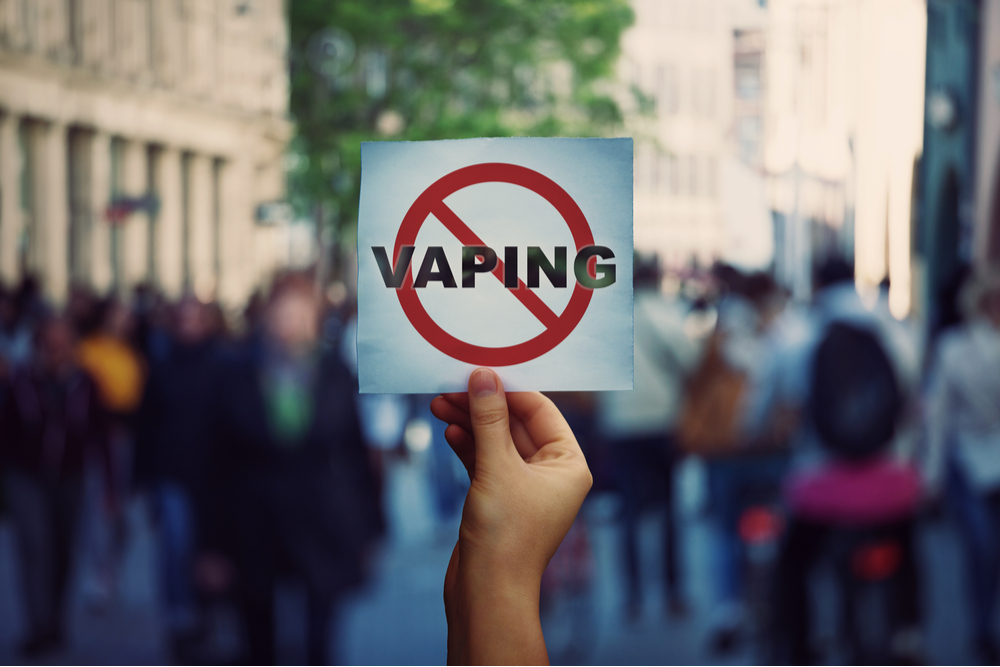In recent years, vaping has become a public health epidemic. Since 2014, e-cigarettes have been the most commonly used tobacco product among youth. In 2020, about 1 in 5 high school students in the United States reported using e-cigarettes in the past month. 3.6 million young people are currently using e-cigarettes — exceeding traditional cigarettes.
Vaping is the inhalation and exhalation of nicotine liquid heated by an electronic cigarette (also called e-cigarettes or e-cigs) or vape pen. Although vaping started as an aid for adults to quit smoking, it is addictive.
Nearly 9 in 10 adult smokers start smoking as teens, and teens have been well educated about the risks associated with smoking cigarettes. However, many teens underestimate the risks of vaping. By preventing teen vaping before it happens, you can help teens avoid the harm of nicotine and e-cigarettes, now and in the future.
- E-cigarettes are harmful to health. While vaping is less harmful than smoking, using any form of nicotine product is unsafe.
- Teens are especially vulnerable to harmful effects from vaping, including nicotine addiction, because their brains are still developing until around age 25. Nicotine addiction can affect focus, memory, and learning.
- E-cigarettes can contain other harmful chemicals besides nicotine. Some chemicals, like diacetyl, may lead to serious conditions like lung disease and asthma.
- Teens who use e-cigarettes are more likely to start smoking cigarettes in the future.
- The Centers for Disease Control and Prevention (CDC) and Food and Drug Administration (FDA) are currently investigating a national outbreak of e-cigarette, or vaping, product use-associated lung injury (EVALI).
Set a Good Example
Teens are easily influenced by those around them. Teen smoking is more common among teens whose parents smoke. If you smoke or vape, it’s never too late to quit. Discuss with your teen why you regret smoking or how hard it is to quit. At the very least, don’t smoke around your kids and don’t let friends or family smoke or vape in the house.
Parents, teachers, and other concerned adults may feel that teens don’t listen, but talk to your teen about how addictive vaping can be.You can be a powerful influence, and your words carry weight.
Understand “Hidden” E-Cigarettes
Teens may hide e-cigarettes in plain sight, and you may have seen an e-cigarette without knowing it. Certain brands of e-cigarettes, like the popular brand JUUL, look like a USB flash drive. One JUUL “pod” contains as much nicotine as a pack of 20 cigarettes. Other e-cigarettes can look like highlighters or pens.

Have an Open Conversation About Thoughts, Dangers, and Peer Pressure
Teach teens how to say no. Discuss how to react if a friend offers an e-cigarette. Rehearsing how to refuse vaping can help teens make good decisions and respond the right way when tough situations come up. For example, they could say, “No thanks, I don’t vape” and suggest another activity.
Educate yourself about e-cigarettes. Start talking to kids about smoking and vaping from a young age and continue talking as they get older.
Be open to your teen’s point of view. Teens may respond better when conversations come up naturally and when the conversation is an open dialogue rather than declarative statements like “Vaping is bad”. For example, you can start a conversation when seeing a person vape or passing a vaping ad and asking “What is your experience with that? What are the flavors like?”
Everyone Plays a Part
To protect teens from the epidemic of vaping, everyone from parents, schools, public health officials, and members of the community can play their part. To connect with teens and young adults where they are, check out health campaigns targeted to teens like The Truth and The Real Cost.
Schools can do their part to protect their students by educating students with nicotine prevention education. For students who are already vaping, schools can provide the support they need to help them quit, including effective interventions for behavior change. At 3rd Millennium, we offer Nicotine 101, an online course with personalized feedback that helps students make healthy choices. The course uses personalized feedback, challenges misconceptions, helps students develop refusal skills, and facilitates a plan to quit. This course can be used as both a prevention and an intervention for smoking and vaping.
By educating your teen on making better choices about vaping, you can help them live healthier lives, tobacco-free.
Gain the skills you need to help your teen navigate substance use with
our parent training and awareness course, Parent-Wise!
References
-
“Youth Tobacco Use: Results from the National Youth Tobacco Survey.” Food and Drug Administration. https://www.fda.gov/tobacco-products/youth-and-tobacco/youth-tobacco-use-results-national-youth-tobacco-survey
-
“Protecting Young People from E-Cigarettes.” Centers for Disease Control and Prevention. https://www.cdc.gov/tobacco/features/back-to-school/protecting-young-people-from-e-cigarettes/index.html




